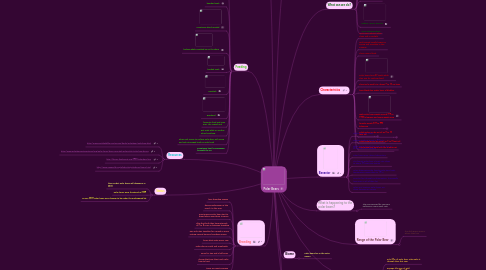Polar Bears
Door Sherin12 M


1. threats
1.1. toxins in their food supply
1.2. oil spill
1.3. loss of habitat
1.4. humans
2. Feeding
2.1. They eat young walruses
2.2. bearded seals
2.3. sometimes dead narwhal
2.4. beluga whales washed up on the shore
2.5. hooded seals
2.6. narwhals
2.7. Bowhead
2.8. favourite food and main prey the ringed seal
2.9. get seals while on surface when breathing
2.10. when seal comes to surface polar bear will spring and sink its jagged teeth in seals head
2.11. sometimes hunt by swimming beneath the ice
3. Interesting Facts
3.1. polar bears are at the top of the food chain
3.2. Ursus maritimus is the latin name for sea bear
3.3. there are 20 to 25,0000 polar bears world wide
3.4. when ice forms on ocean in cold weather many polarbears will go hunt seals except the pregnant females
3.5. polar bears spotted on sea ice hundred miles away from shore
3.6. A polar bear’s closest relative is the brown bear
3.7. they dog paddle with their face
3.7.1. swim average of 6 miles per hour
4. Breeding
4.1. have breeding season
4.2. during midsummer in late march to late may
4.3. most women polar bear start to bread when ages three to seven
4.4. after first birth thay have intervals of 2 to 4 years in between breeding
4.5. pair only stay together for a week or more mating several times in breeding season
4.6. bears dont mate every year
4.7. make dens in earth and snowbanks
4.8. nurse for two and a half years
4.9. during that time they teach cubs how to hunt
4.10. twins are most common
5. Status
5.1. they predict polar bears will disappear in 2030
5.2. polar bears were threatend in 2005
5.3. in May 2008 polar bears were beging to be under the endangered list
6. Resources
6.1. http://www.worldwildlife.org/species/finder/polarbear/polarbear.html
6.2. http://www.polarbearsinternational.org/polar-bears/bear-essentials-polar-style/polar-bear-basics
6.3. http://library.thinkquest.org/3500/polarbear.htm
6.4. http://www.seaworld.org/infobooks/polarbears/home.html
7. What is happening to the polar bears?
7.1. The area covered by sea ice is melting in a very quick rate
8. Characteristics
8.1. Look most whitest when clean and in sunlight
8.2. Molt period usually begins in spring and complete in late summer
8.3. Their nose is black.
8.4. Polar bears have 42 teeth which they use for catching food.
8.5. Their tail is small it is about 7 to 12 cm long
8.6. have black skin under layer of blubber
8.7. male polar bear weigh around 775 to 1500 kilograms and some weigh more
8.8. females weigh 335 to 550 kilograms
8.8.1. New node
8.9. adult males can be as tall as 8 to 10 feet tall
8.9.1. New node
8.10. adult females can be as tall as 6 to 8 feet tall
8.11. cubs when first born look like a white rat
9. Habitat
9.1. They can be found in the Arctic, the U.S. (Alaska), Canada, Russia, Denmark (Greenland), and Norway.
9.2. live along shores
10. Life Span
10.1. only 43% of polar bear cubs make it through their first year
10.2. average life span of wild polar bear is 15 to 18 years
10.3. a new born polar bear weighs less than 700 grams
10.4. may go to early to mid late 30s
10.5. zoo polar bear in Canada lived up to 42
11. Range of the Polar Bear
11.1. the dark green area is where they live
12. Why are they endangered
12.1. Ice is melting because of global warning
12.1.1. New node
12.2. need ice to survive
12.3. no platform to stand on while catching seal
13. What can we do?
13.1. stop fishing in the Artic
13.2. Renewable energy
13.3. change light bulbs to CFLs
13.4. walk more or carpool
13.5. Reduce, Reuse, Recycle
13.6. reuse shopping bags
14. Bevavior
14.1. polar bears can stand
14.1.1. New node
